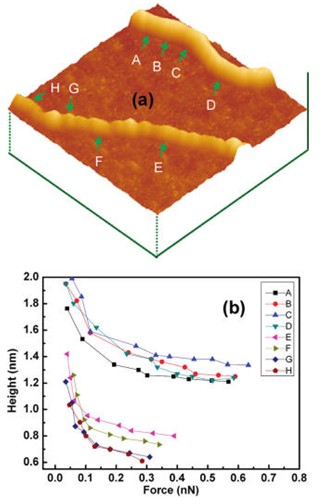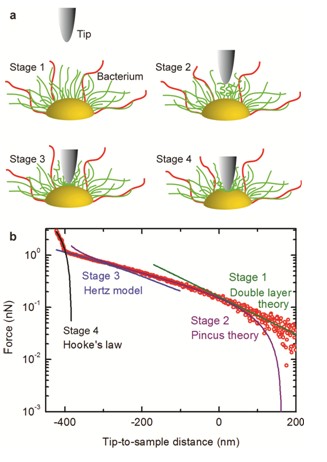| Location: Home > Department > Intelligence Manufacturing > Center for Terahertz Technology Research |
| Center for Terahertz Technology Research |
|
|
I. Introduction
Center for Terahertz Technology Research (CTTR) of Chongqing Institution of Green and Intelligent Technology (CIGIT), Chinese academy of Sciences was founded in December, 2012. CTTR aims at building a terahertz detection system including the terahertz sourcesbased on the new theories and methods in terahertz technology field. It devotes to utilizingterahertz technologies inimportant basis and application fields, such as non-destructive testing, optoelectronic communication, semiconductor, biomedicine imaging, and gene diagnosis. CTTR will build an interdisciplinary research team composed of scientists from mathematics, physics, informatics, material and life science etcwith strong theoretical and application backgrounds. Now CTTR has set up a research team including the Thousand Talents Plan Adjunct Professor Cui Hongliang and Professor Du Chunlei, a senior expert in optoelectronic field. CTTR has started a theoretical and experimental study of terahertz wave imaging and detecting for biomacromolecules, equipped a terahertz biomedicine detection system, sponsored or participated in four national or region significant projects and obtained research funds over 10 million.
II. Research Interest (i) Experimental and theoretical studies on Bio-macromolecular Terahertz spectroscopy and imaging Try tobuild a bio-macromolecular THz spectrum and imaging equipment to realize the real-time and dynamic observation and the interaction studies of biomolecules on the micro-/nano-size.
(ii) THz non-destructive testing of composite materials Set up the non-destructive testing experimental methods. Testing materials include fiber, plastics, glass, ceramics etc.
(iii) Generation of high-power THz source Design and develop 1w above THz sources for accurate sample testing under the strong absorption and low signal-to-noise ratio conditions and for high-throughput full-field and real time Thz imaging.
III. Team Talents Hongliang Cui, doctor, Thousand Talents Plan Professor of Jilin University, distinguished adjunct professor of CIGIT, director of Centre for Terahertz Technology Research.He obtained his Ph.D. degree in theoretical condensed matter physics from Stevens Institute of Technology in 1987. His research efforts have been concentrated in the areas of solid-state electronics/nanoelectronics, optical communications and sensing, electromagnetic wave propagation and interaction with matters. His work has been funded by NSF, ARO, ONR, and DARPA, with a total funding of more than $18M in the last 20 years. He has published more than 200 research papers in peer-reviewed scientific journals, holds 9 US patents and 8 Chinese patents, and guided more than 30 Ph.D. dissertations to completion.
Chunlei Du, professor, head of the Intelligent Manufacture Institute. She studied at the optical group of Paul Scherrer Institute, Switzerland, Institute for Applied Optics at University of Erlangen-Nuremberg, Germany and Nanophotonics Research Center at Swinburne University, Australia as a visiting scholar professor. Her research focuses on micro/nano optical device and system, micro/nano and sub-wavelength optics, artificial electromagnetic structure materials, micro/nano sensor technologies etc. She obtained 2nd Prize of National Technology Invention in 2011, 1st Prize of Science and Technology Development Award at the ministry-and-commission level in 2010, 3rd Prize of Science and Technology Progress of Chinese Academy of Sciences in 1998, 3rd Prize of Sichuan Science and Technology Progress in 2001 and some other important awards. She becomes a SPIE fellow in 2010. Up to date, she has published 180 research papers, 1 book, and 70 patents, and guided 30 Master or Ph.D. dissertation to completion.
Dongshan Wei, doctor, associate professor, deputy director of CTTR. He got his Ph. D. from the Institution of Chemistry, the Academy of Sciences in 2007 and worked as a postdoc in the Department of Mechanical Engineering and Department of Chemistry at Boston University from 2007 to 2011. His research focuses on THz spectroscopy and imaging for biomolecules, theoretical calculations and simulations of polymer, biomolecules and nano materials; He has published 11 papers in the journals of J. Chem. Phys, Surface Science,Macromolecular Rapid Communications etc. He is a member of American Chemical Society (ACS) and American Society of Mechanical Engineers (ASME). Huabin Wang, PhD, specially appointed Professor. He obtained his PhD from the Institute of Shanghai Applied Physics, the Chinese Academy of Sciences in 2008. Afterwards, he worked as a postdoctoral research fellow for nearly six years (from June 2008 to March 2014) in the School of Chemistry (in collaboration with the Department of Microbiology and Immunology), the University of Melbourne, Australia. His major research areas include high resolution imaging and nanomechanics measurement of biological materials, and thefriction of solid materials. He has published more than 20 peer review international journal articles, including PNAS,Angew. Chem. Int. Edit., Soft Matter, Langmuir, J. Mater.Chemi., Ultramicroscopy, etc.He is currently a member of the Australian Society for Biophysics. IV. Research Outcome (i) First terahertz spectroscopy patent for biomolecular solution, in which the nuclein characters were discerned by the terahertz absorption spectrum.
(i) Folding of biomolecules was simulated and the THz absorption intensity of Thioredoxin in water was calcuated by MD simulations.
(iii) Molecular expanpsion of an individual colied DNA on a graphite surface
(iv) Evaluation of the radial deformability of Poly(dG)-Poly(dC) DNA andG4-DNA
(v)Nanomechanics measurement of a single bacteria cell
|






